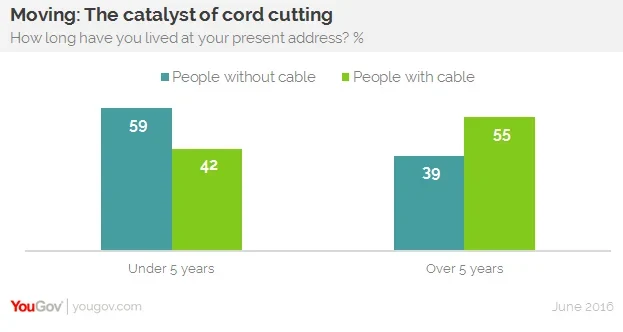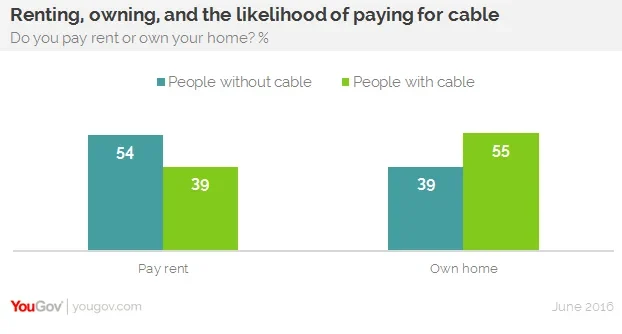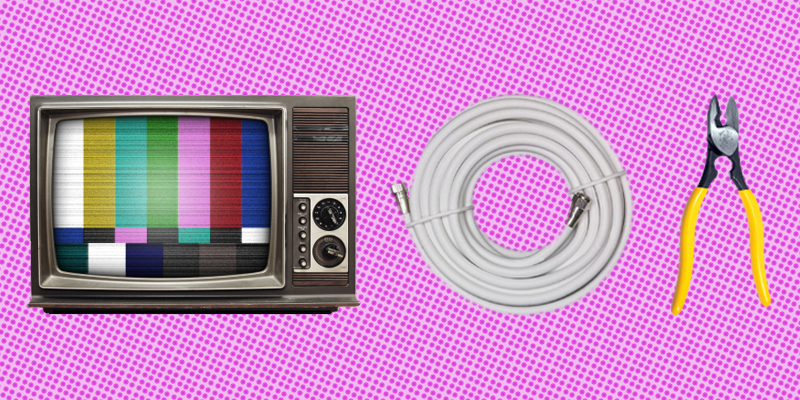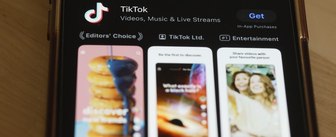While many factors, from ad fatigue to new technology, may tempt people to ditch their cable provider, the act of moving homes provides the perfect opportunity to make the switch
Last summer, the Wall Street Journal reported that U.S. homeownership rates had hit a 48-year low. Fewer people are buying; more people are renting. Especially young people.
This trend means many different things for the economy, and one of them, perhaps less intuitively, has to do with whether people keep their cable subscription. Cord cutters — as people who've abandoned cable in favor of internet streaming and other devices and services to watch TV tend to be called — are on the rise. Reasons for the growing shift seem clear: viewers prefer to watch without commercial interruptions; the same shows can increasingly be found online; and people generally don't like paying for channels they never watch.
While all these factors can contribute to someone thinking about cutting the cord, new data from YouGov Profiles suggests that the act of moving itself is the best predictor that someone will.
Looking at people who have cable versus those who don't, the contrasts become quite stark. The latter camp, for example, are nearly 50% millennial, and tend to be educated females who live in cities. Perhaps most importantly, however, is the fact that people without cable have moved more recently. (It's important to note here that data from YouGov Profiles captures people who don't have cable, not people who necessarily had cable before and now don't.)

Whether it was a month, six months, or three years ago, the pattern remains the same: People who have recently moved are more likely to get by without cable.
The same trend holds true for renting versus owning — the implication being that not only have people without cable moved more recently, but that they likely change their address more frequently, too. In this sense, moving may provide the jolt some people need to take decisive action and make the switch.

It's interesting to note that while those with cable do show a warmer reception to traditional advertising (23% say they enjoy ads on TV, compared to 13% of people without cable) and tend to prefer watching shows live (47% compared to 31%), by and large they aren't any less internet savvy or behind on the latest technology.
As TV-watching options continue to expand, cable is slowly becoming one choice among many. Moving, it seems, might be the final nudge people need to seriously consider exploring those other options.










